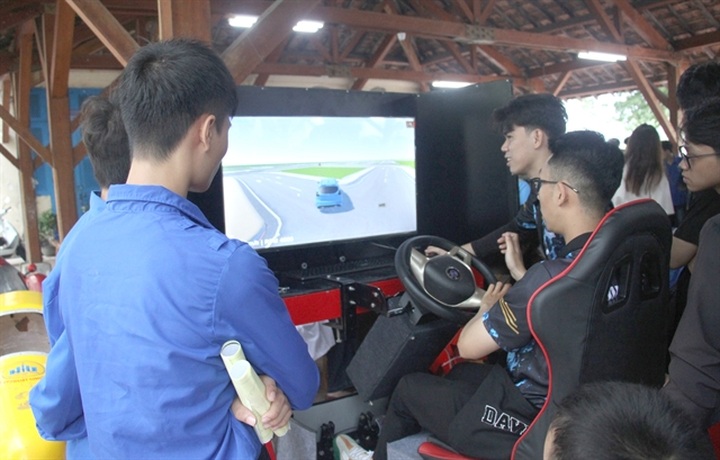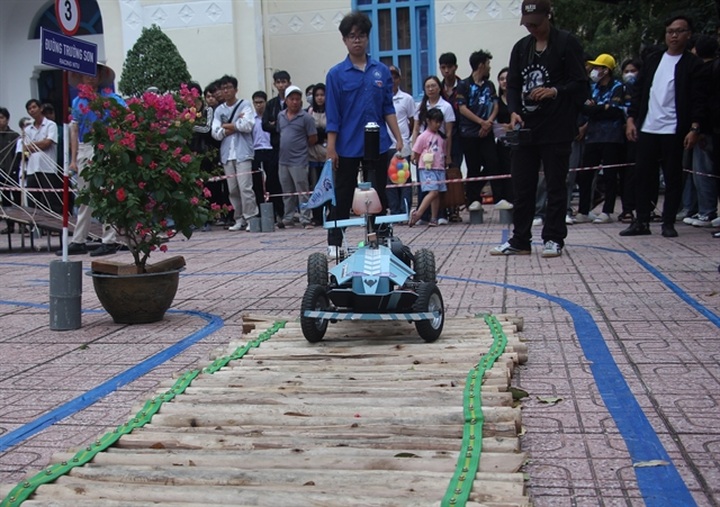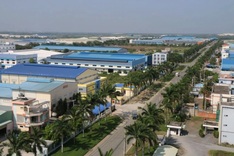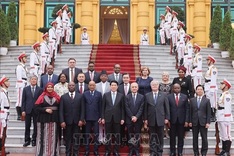
Students of Nha Trang University operate their own virtual driving model in the coastal central province of Nha Trrang.
The higher education system must revise its curriculum, teaching methods and learning approaches to promote STEM (science, technology, engineering and mathematics) education and attract talented individuals to these fields in the years ahead.
This aligns with the goals set out in a resolution issued on December 22, 2024 by Politburo of the Vietnam Communist Party on making breakthroughs in science, technology, innovation and national digital transformation.
The Ministry of Education and Training has also set a target for Vietnam to establish an increasing number of prestigious regional and global universities in STEM fields in the future.
Nguyen Anh Dung, deputy director of the Higher Education Department under the Ministry of Education and Training, said that to realise these goals, investments must be targeted and focused.
According to Dung, the ministry will launch talent development programmes linked with research, innovation and creativity at key universities to create an attractive learning and research environment.
Scholarships, favourable tuition fees and supportive credit policies will also be introduced to attract outstanding students.
In terms of institutional reform, he said that there is still much to be done, including developing faculty capacity, enhancing training programmes, and building stronger links with businesses.
The ministry is also encouraging universities to learn from one another, form alliances and establish networks for STEM education, enabling more effective use of State investment through both domestic and international collaborations.
Fundamental shift required
Dang Hoai Bac, director of the Post and Telecommunications Institute of Technology (PTIT), one of five technical universities designated as national key institutions, shared that many universities still focused on transmitting knowledge and explaining existing technologies.
However, students must be taught how to absorb, apply and build upon technology, enabling them to become innovators and creators.
“This is a long-term effort that requires a fundamental shift in higher education,” Bac said.
Students today are assessed not only on knowledge, skills and behaviour, but also on their sense of responsibility to work and society, according to Bắc.
In terms of knowledge, Vietnamese students typically reach 80–90 per cent of the level of their peers in top international institutions. However, their practical skills remain limited, which is why universities should enable hands-on experience from the first or second year.
“To do that, we must create a real-world learning environment that encourages creativity from the outset,” he said.
Regarding attitudes and social responsibility, Bắc stressed the importance of mentoring by major companies committed to national development.
"University lecturers also play a critical role," he said. “They must inject life into their teaching, staying up-to-date with new knowledge while gaining practical experience to drive innovation and offer relevant solutions.”
He emphasised the need for integration between training, research and business production, saying the three elements must be tightly linked.

An autonomous car created by students participating in the STEM competition at Nha Trang University.
Chu Duc Trinh, rector of the University of Engineering and Technology under Vietnam National University, Hanoi, said major technical universities — including Hanoi University of Science and Technology, the University of Engineering and Technology, and PTIT — should establish strong foundations in AI to support the industry’s growth.
“We must train a high-quality workforce to build AI tools. If our universities and scientific community cannot master AI to some extent, we will always be left behind, dependent on foreign products,” Trình said.
In addition to public institutions, private universities are also playing an important role in training high-quality human resources in sci-tech.
Nguyen Phu Khanh, vice rector of Phenikaa University, said that while innovation ecosystems might differ between public and private institutions, their objectives remained aligned.
Both, he said, should have strategies to familiarise students with technology from an early stage.
On the topic of AI, he noted that a period of structured training and development is essential.
Phenikaa University has already begun working with secondary and high schools to introduce AI to students early and support their development, aiming to nurture a spirit of experimentation and critical thinking over the next decade.
Low STEM enrolment
According to Dung, in 2024, over 180,000 students enrolled in STEM-related fields. On average, STEM enrolments have grown by 17 per cent per year over the past four years.
Currently, Vietnam has around 55 STEM students per 10,000 people, accounting for roughly 30 per cent of all higher education enrolment.
“However, compared to developed countries with strong sci-tech sectors, this figure remains modest,” he said.
For instance, in Singapore, 46 per cent of students pursue STEM fields, while the figure is 40 per cent in Germany, 36 per cent in Finland, and 35 per cent in South Korea.
Lê Trường Tùng, chairman of the Board of Directors at FPT University, also expressed concern about low STEM enrolment, calling for policies to better encourage students to choose these fields.
He noted that while entry standards for semiconductor microchip training had been developed, the focus should be on managing quality at the output stage, rather than limiting access at the start.
“If we restrict entry when a large workforce is needed, the policy will be counterproductive,” he said. “There’s a difference between producing elite talent and training enough people for an expanding industry.”
Tùng emphasised that training high-quality human resources would require not just knowledge, but also strong research capabilities and practical creativity.
“As AI evolves, the content, methods and approaches to education must adapt,” he said.




















